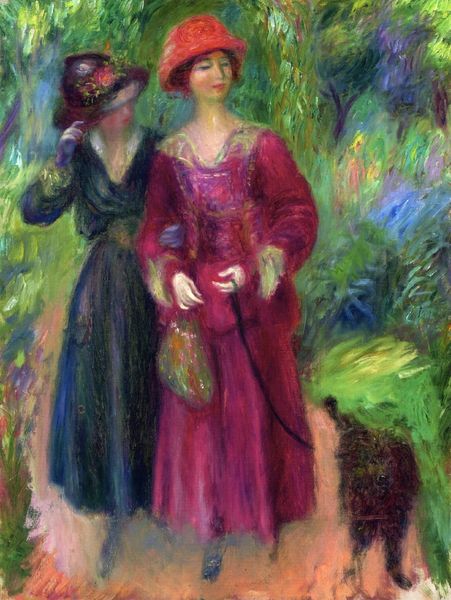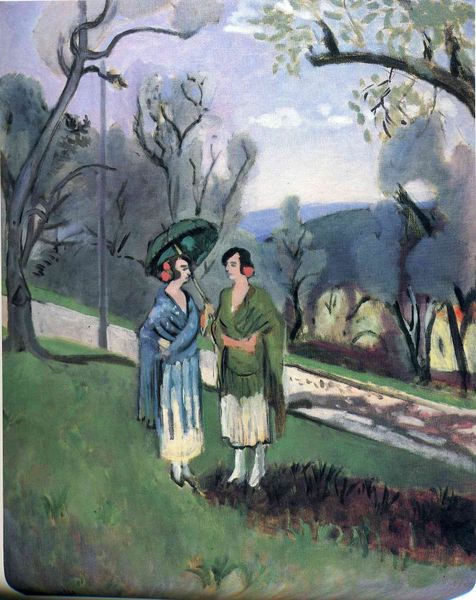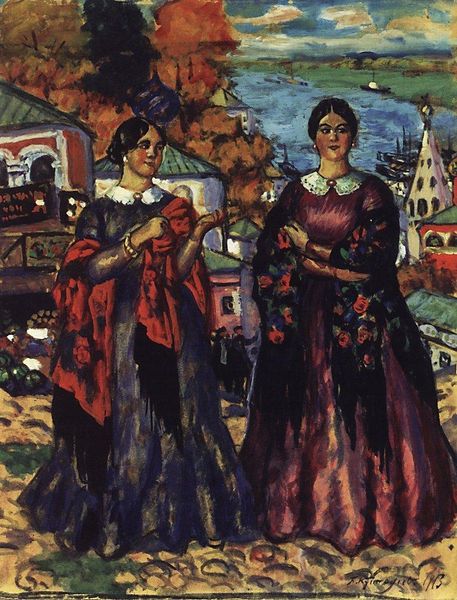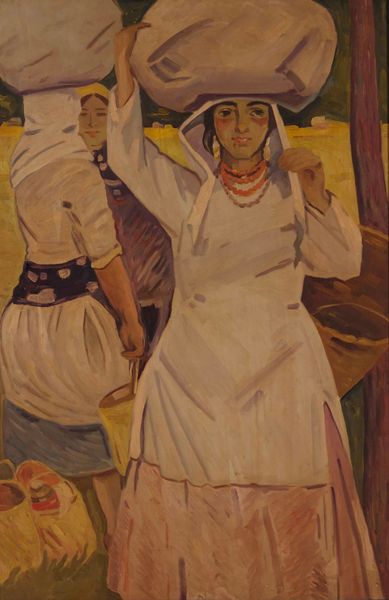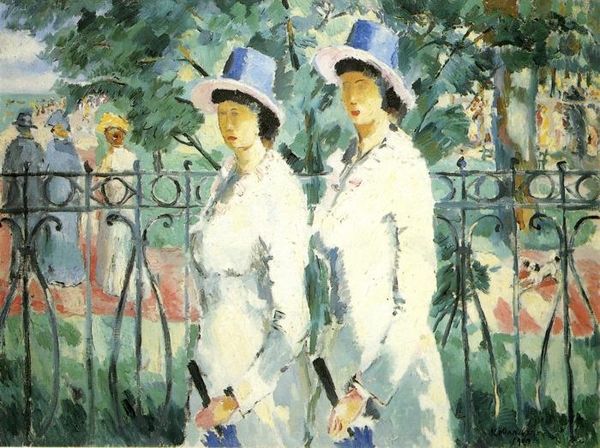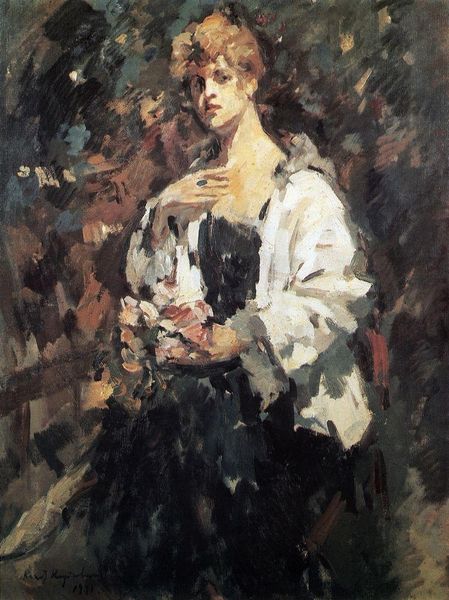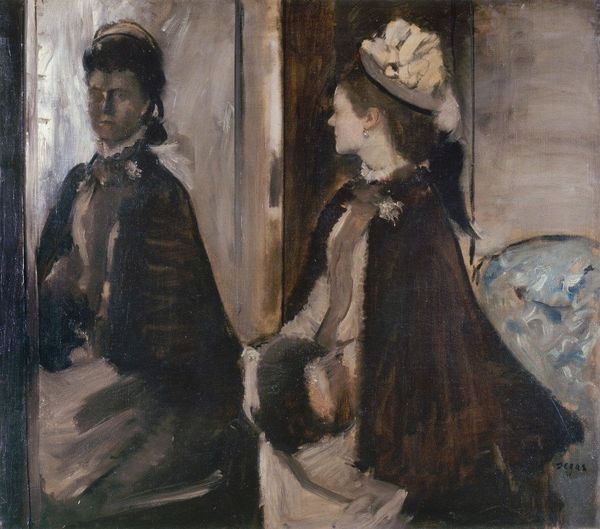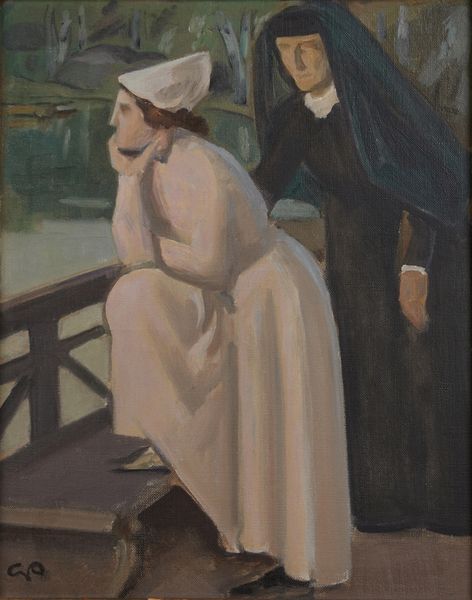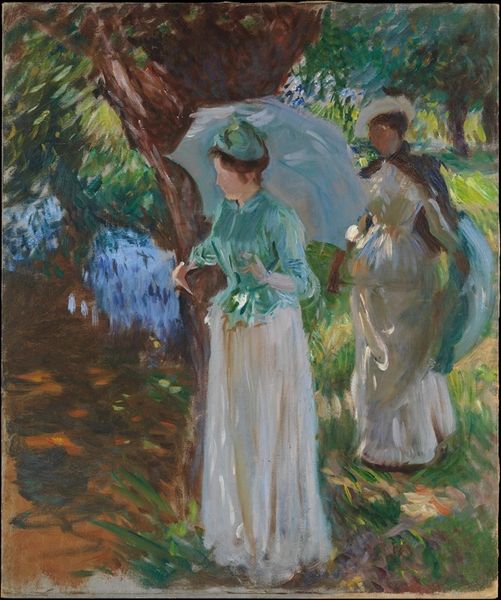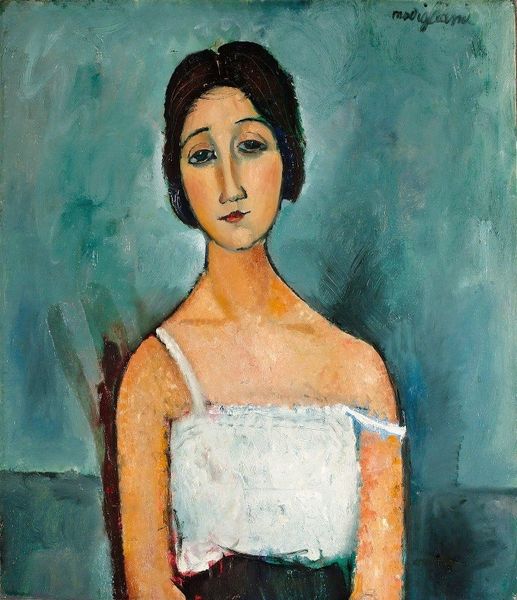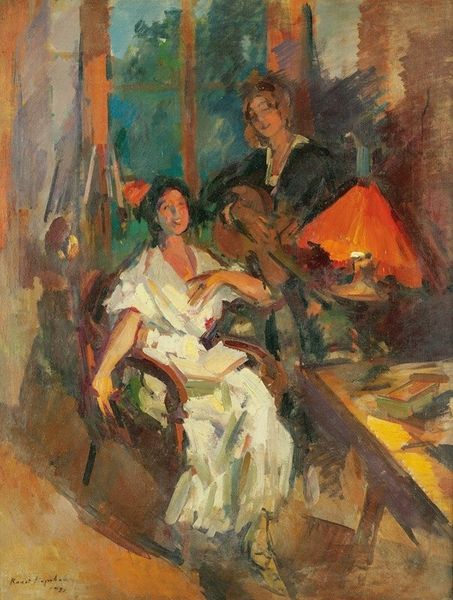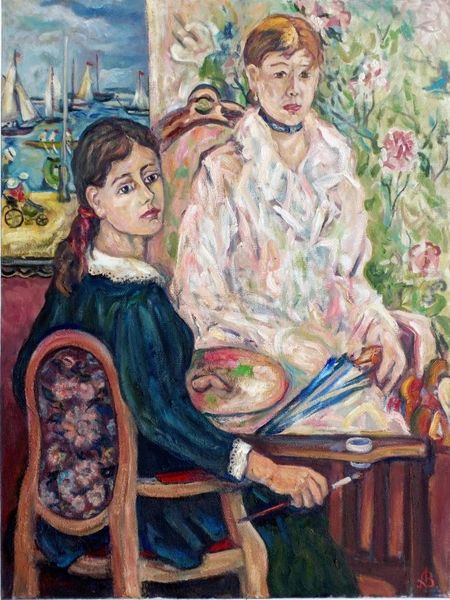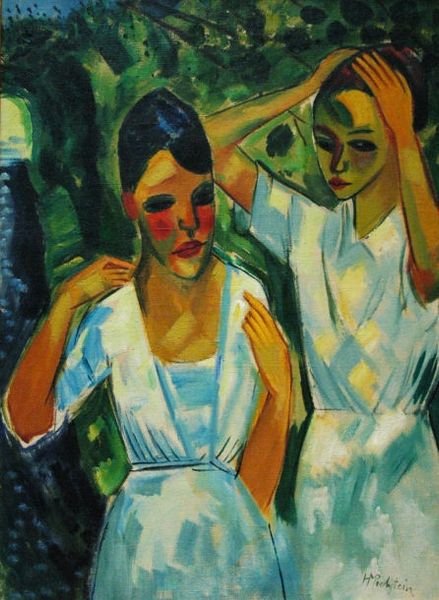
Copyright: Public Domain: Artvee
Cézanne’s "La Promenade" presents us with two women amidst verdant foliage, their parasols emblems of bourgeois leisure. The parasol, a symbol of protection from the elements, extends far beyond mere practicality. Historically, its bearer has transformed: from the sacred shade for royalty in ancient Persia to a fashion statement in 19th-century Europe. The parasol signifies status, an indicator of the women's place in society, shielded from labor and the sun's darkening effect. Its presence echoes in ancient Egyptian art, where fans and parasols signified divine status, waved above pharaohs as they were carried through the streets. The gesture of holding a parasol, like a scepter, becomes a powerful symbol, engaging viewers on a deep, subconscious level. It's a memory passed down through generations, evolving from a symbol of divine power to one of social distinction. Like a recurring dream, the parasol resurfaces, each time subtly altered by its historical context, yet retaining its core essence of protection and status.
Comments
No comments
Be the first to comment and join the conversation on the ultimate creative platform.
